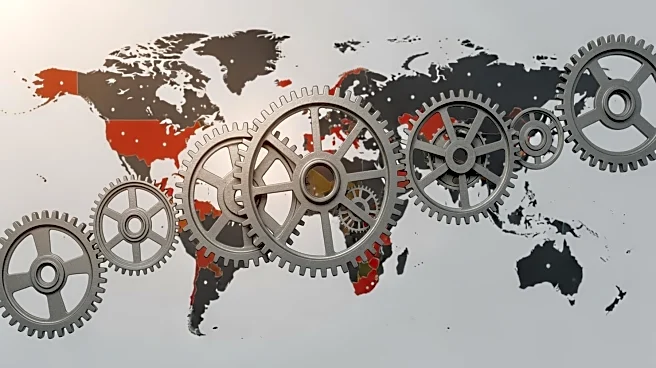What's Happening?
Soybean futures experienced a significant increase on Wednesday, driven by China's decision to lift select tariffs on U.S. agricultural goods. This move has provided support across both the grain and equity markets, with January soybeans closing up 12¾¢
at $11.34¾ per bushel. The decision by Beijing has fueled renewed fund buying and a bullish tone across the complex, despite U.S. soybeans being priced at a premium compared to South American offerings. Additionally, December corn ended the day up 3¾¢ at $4.35¾ per bushel, while December CBOT wheat closed up 4½¢ at $5.54¾ per bushel. The cattle market, however, faced challenges, with December live cattle ending the day down $7.25 at $220.53 per hundredweight, influenced by long liquidation pressures.
Why It's Important?
China's decision to lift tariffs on U.S. agricultural goods is a significant development for American farmers and the agricultural industry. It signals a potential easing of trade tensions between the two countries, which could lead to increased exports and improved market conditions for U.S. agricultural products. The move is particularly beneficial for soybean producers, as China is a major consumer of soybeans. This development may help stabilize prices and provide a more favorable environment for U.S. farmers, who have faced challenges due to previous trade barriers. The broader impact on the grain and equity markets also suggests potential positive economic implications, as increased trade can contribute to economic growth and stability.
What's Next?
The lifting of tariffs by China may lead to further negotiations and potential agreements between the U.S. and China regarding agricultural trade. Stakeholders in the agricultural sector will likely monitor the situation closely to assess the long-term impact on trade relations and market dynamics. Additionally, U.S. farmers and agricultural businesses may explore opportunities to expand their market presence in China, leveraging the improved trade conditions. The cattle market, facing liquidation pressures, may require strategic adjustments to address current challenges and capitalize on supportive fundamentals, such as historically low cattle inventory levels.
Beyond the Headlines
The decision by China to lift tariffs on U.S. agricultural goods may have deeper implications for international trade relations and geopolitical dynamics. It could be seen as a strategic move by China to strengthen economic ties with the U.S., potentially influencing broader diplomatic relations. The agricultural sector's response to this development may also highlight the importance of trade policy in shaping economic outcomes and the need for continued dialogue and cooperation between major global economies.














